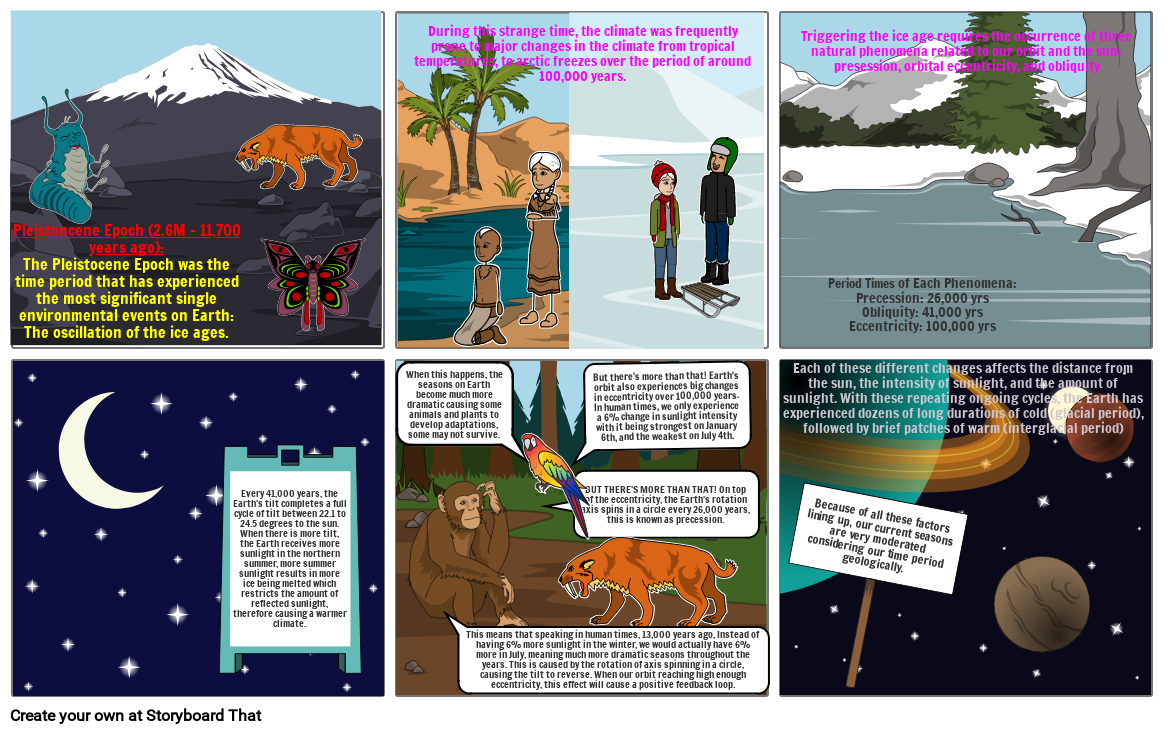ice age

Text z Príbehu
- Pleistoncene Epoch (2.6M - 11,700 years ago):The Pleistocene Epoch was the time period that has experienced the most significant single environmental events on Earth: The oscillation of the ice ages.
- During this strange time, the climate was frequently prone to major changes in the climate from tropical temperatures, to arctic freezes over the period of around 100,000 years.
- Period Times of Each Phenomena:Precession: 26,000 yrsObliquity: 41,000 yrsEccentricity: 100,000 yrs
- Triggering the ice age requires the occurrence of three natural phenomena related to our orbit and the sun: presession, orbital eccentricity, and obliquity
- Every 41,000 years, the Earth's tilt completes a full cycle of tilt between 22.1 to 24.5 degrees to the sun. When there is more tilt, the Earth receives more sunlight in the northern summer, more summer sunlight results in more ice being melted which restricts the amount of reflected sunlight, therefore causing a warmer climate.
- When this happens, the seasons on Earth become much more dramatic causing some animals and plants to develop adaptations, some may not survive.
- This means that speaking in human times, 13,000 years ago, Instead of having 6% more sunlight in the winter, we would actually have 6% more in July, meaning much more dramatic seasons throughout the years. This is caused by the rotation of axis spinning in a circle, causing the tilt to reverse. When our orbit reaching high enough eccentricity, this effect will cause a positive feedback loop.
- BUT THERE'S MORE THAN THAT! On top of the eccentricity, the Earth's rotation axis spins in a circle every 26,000 years, this is known as precession.
- But there's more than that! Earth's orbit also experiences big changes in eccentricity over 100,000 years. In human times, we only experience a 6% change in sunlight intensity with it being strongest on January 6th, and the weakest on July 4th.
- Each of these different changes affects the distance from the sun, the intensity of sunlight, and the amount of sunlight. With these repeating ongoing cycles, the Earth has experienced dozens of long durations of cold (glacial period), followed by brief patches of warm (interglacial period)
- Because of all these factors lining up, our current seasons are very moderated considering our time period geologically.
Bolo vytvorených viac ako 30 miliónov storyboardov

